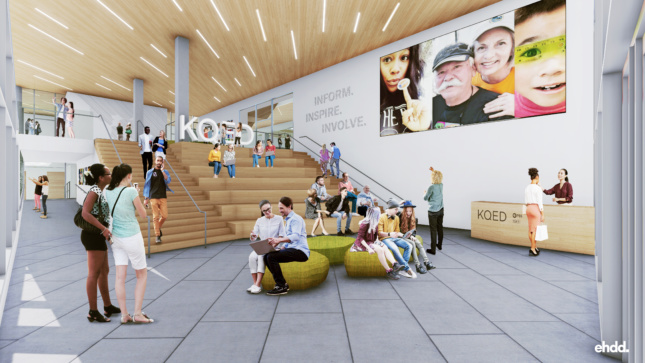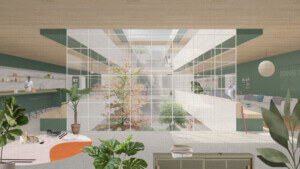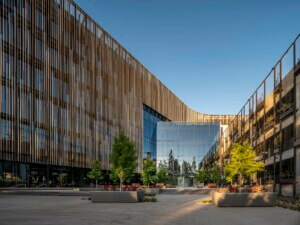San Francisco’s Mission District was a very different place when radio station KQED first began operating within its fortress-like headquarters on the corner of Mariposa and Bryant in 1992. What was once a quiet, working-class neighborhood became one of the most desirable in the city, now distinguished by Michelin star-rated restaurants and multi-million-dollar townhouses.
KQED has made drastic changes within the last 27 years as well. “This used to be an organization that created content and broadcast it out,” said John Boland, president of KQED. “Now there’s much more interaction. We think of ourselves as a community convenor as well as a program producer.” In response, KQED recently reimagined how its building might interact with its context with the help of local firm EHDD Architecture, with a renovation that is, essentially, a new building on the same site. Because KQED recently paid off the mortgage of its headquarters, a thorough reconstruction on the same site was determined to be cheaper than relocating.

The blank white facades will be replaced by a glassy corner entrance flanked by generously sized office windows to the tune of $91 million. Within the entrance lobby will be an amphitheater-like staircase and a 26-foot-tall media wall, all of which will be accessible to the public. “We want to peel up the facade and invite people in,” said Rebecca Sharkey, a principal at EHDD Architecture. “KQED told us from the start they want to make themselves more visible to the community and open up about what public media does.”
The working interior will receive a significant transformation as well, including technical studios updated for the 21st century, a larger newsroom, a skylit atrium on the second floor and a rooftop terrace above the corner entrance which will offer views of the Mission District and beyond. The only elements of the original building that will stay in place are the elevator banks, parking structure and television studio, which will be retrofitted to accommodate public events. “The idea,” Sharkey explained, “is to keep the things that we can while scraping away the rest of what’s there and reconfiguring it.”
Construction is planned to start next July, at which point all 425 employees currently working within the headquarters will be relocated in Downtown San Francisco, and is expected to take two years to complete.











